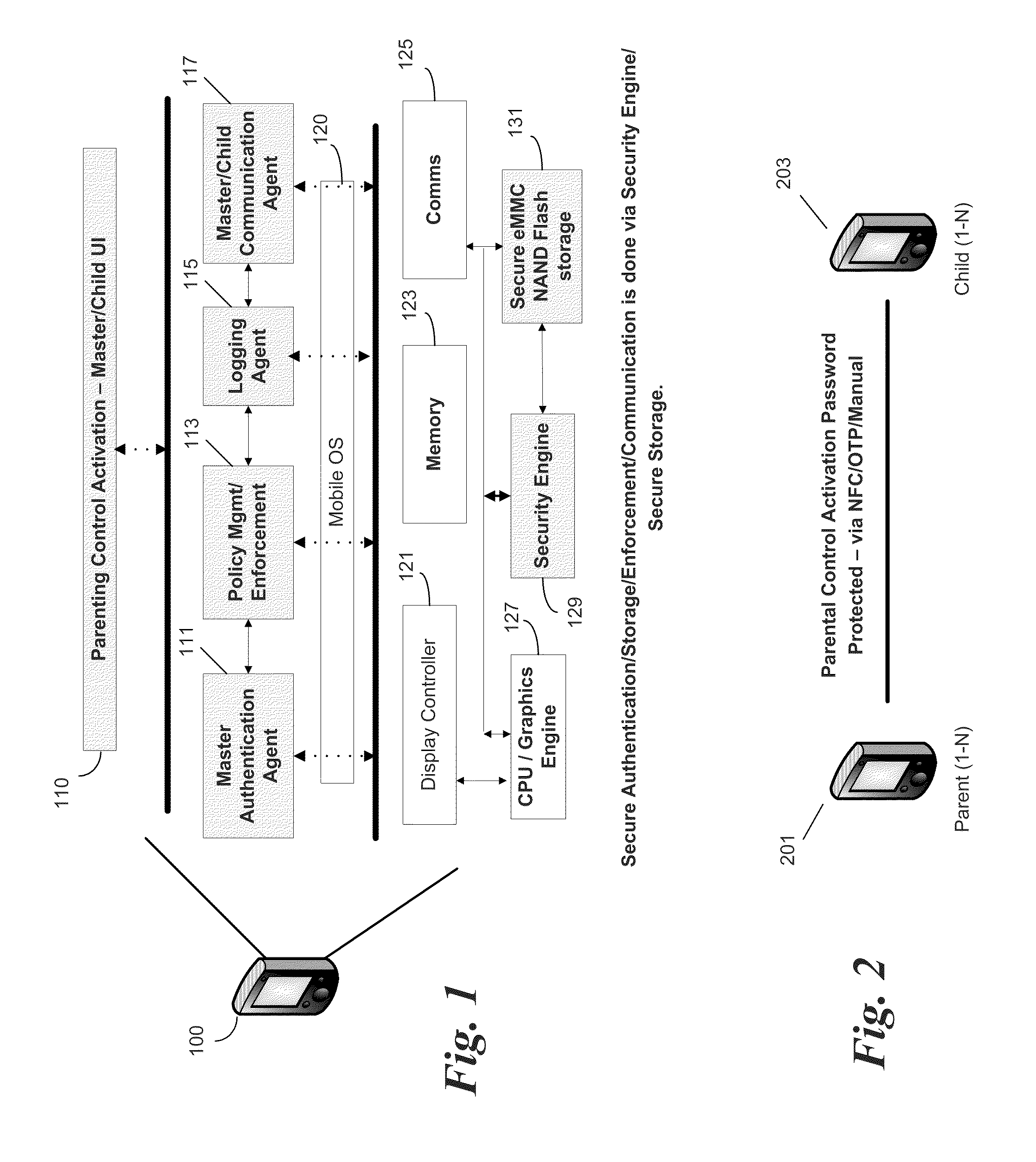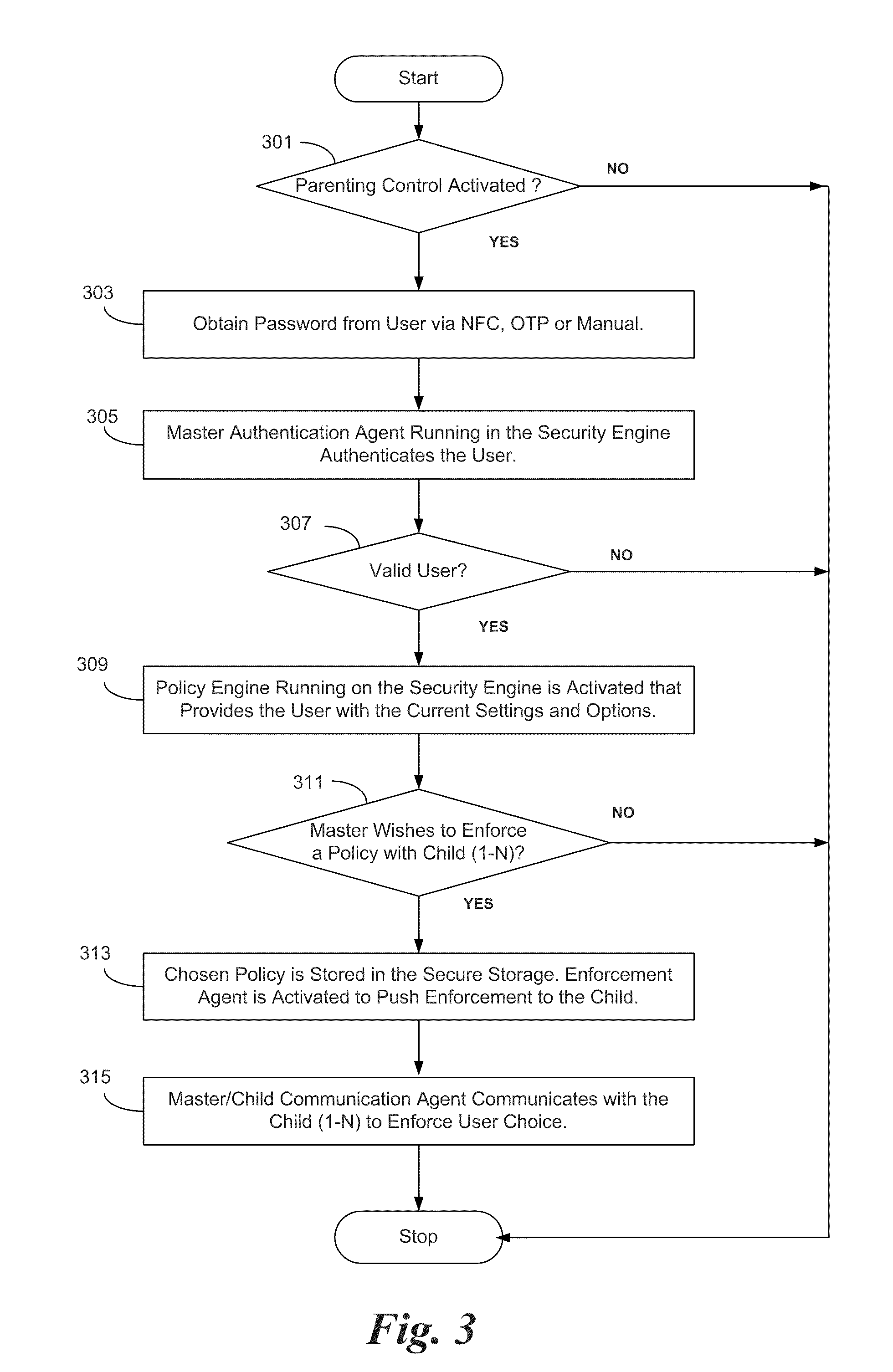Method and apparatus for bearer and server independent parental control on smartphone, managed by the smartphone
a parental control and smartphone technology, applied in the field of smart mobile telephones, can solve the problems that none of them allows users to setup and manage parental control from one phone to another without service providers
- Summary
- Abstract
- Description
- Claims
- Application Information
AI Technical Summary
Benefits of technology
Problems solved by technology
Method used
Image
Examples
Embodiment Construction
[0010]An embodiment of the present invention is a system and method relating to master control of a subordinate or child smart phone using features on the smart phones, and independent of features provided by the phone service providers. For purposes of illustration the term “parent” is used to refer to the user of the master phone and “child” is used to refer to the user of the subordinate phone. It will be understood that familial relationship is not required, but that the master phone may control and monitor the subordinate phone usage as is typically desired by a parent with a minor child. This control will be herein referred to as “parental control.” Embodiments of the present invention enable a feature for the parent to control a child's phone securely without support from cellular service providers.
[0011]Reference in the specification to “one embodiment” or “an embodiment” of the present invention means that a particular feature, structure or characteristic described in conne...
PUM
 Login to View More
Login to View More Abstract
Description
Claims
Application Information
 Login to View More
Login to View More - R&D
- Intellectual Property
- Life Sciences
- Materials
- Tech Scout
- Unparalleled Data Quality
- Higher Quality Content
- 60% Fewer Hallucinations
Browse by: Latest US Patents, China's latest patents, Technical Efficacy Thesaurus, Application Domain, Technology Topic, Popular Technical Reports.
© 2025 PatSnap. All rights reserved.Legal|Privacy policy|Modern Slavery Act Transparency Statement|Sitemap|About US| Contact US: help@patsnap.com



